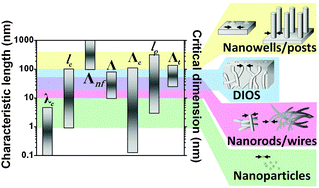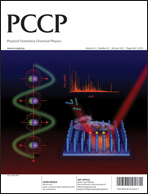Interactions between pulsed laser radiation and nanostructured materials, with dimensions ranging from 1 nm to 500 nm, can result in enhanced desorption and ionization of organic and biomolecular adsorbates. When the critical dimensions of the nanostructures fall below the characteristic lengths for the involved transport processes, novel regimes of ion production are observed. Systems with dimensions commensurate with the wavelength of the laser radiation are the basis of photonic ion sources with unique properties, including polarization dependent ion yields and fragmentation. The main characteristics of these systems are often governed by altered modes of transport, e.g., ballistic vs. diffusive, energy confinement, plasmon resonances, and local field enhancements. Some structures offer control over the internal energy and the active fragmentation channels for the produced ions. Emerging applications of photonic ion sources in mass spectrometry benefit from ultrahigh sensitivity, a wide dynamic range for detection and quantitation, and a broad coverage of adsorbates ranging from small organic molecules to biopolymers, as well as to highly complex samples like single cells.

You have access to this article
 Please wait while we load your content...
Something went wrong. Try again?
Please wait while we load your content...
Something went wrong. Try again?


 Please wait while we load your content...
Please wait while we load your content...